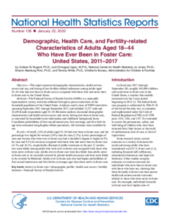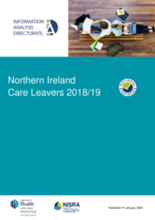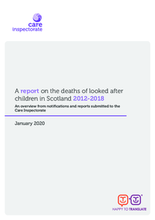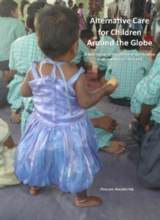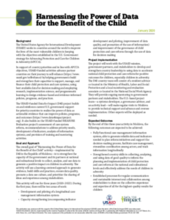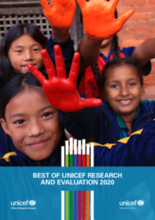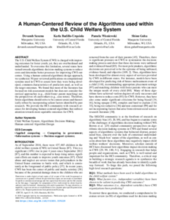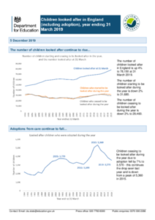Displaying 71 - 80 of 565
The purpose of this manual is to provide guidance on how to collect and report data on children in formal alternative care in a standardised way, and to analyse, present, and make the data available for use.
This study examined the outcomes of a training aimed at enhancing child welfare practitioners’ use of data from the the Ontario Looking After Children (OnLAC) project for service planning related to young people’s educational outcomes.
This report presents demographic characteristics, health service access and use, and timing of key fertility-related milestones among adults aged 18–44 who had ever been in foster care as compared with those who had never been in foster care in the United States.
This annual publication presents information on those who left care during the previous financial year, as well as the circumstances of those who have left care at the time of their nineteenth birthday.
This report draws attention to themes emerging from notifications of the deaths of 61 care experienced children and young people over seven years from 2012 to 2018.
This report is the culmination of almost four years of research. It gives an overview of the child protection situation in all 195 autonomous countries in the world.
The overall goal of “Harnessing the Power of Data for the Benefit of the Child” activity—implemented by D4I in the Republic of Moldova—is to strengthen the capacity of the government and its partners at national and subnational levels to collect, analyze, and use data to generate a positive impact on children in adversity.
This publication from UNICEF showcases 18 reports from 2020 with a high potential for impact on policies and programmes that benefit children, including a report on deinstitutionalization in Bulgaria, a report on unaccompanied minors in Italy, and more.
Using a human-centered algorithmic design approach, the authors of this study synthesize 50 peer-reviewed publications on computational systems used in the U.S. Child Welfare System (CWS) to assess how they were being developed, common characteristics of predictors used, as well as the target outcomes.
This report reviews information on looked-after children in the UK at both national and local authority levels for the financial year 2018 to 2019.


